- Get link
- X
- Other Apps
- Get link
- X
- Other Apps
Why 60s Fashion Had Been So Popular Till Now?
The 60s were an explosive moment, musically, culturally and especially fashion. The mods had entered the scene with their subversive clothes and their blurred hairstyles. Much of the impetus for the radical style of the 60's emanated from Britain, where the designers and boutiques of London's Carnaby Street put a lot of fashion trends.
From this change of climate came changes in the standards of beauty. In the 1950s, fleshy and voluptuous bodies with large breasts were idealized. The women wore rigid and artificial hairstyles, stiff, voluminous skirts, high heels, bolero cardigans and crisp cotton shirts and tops or full floral dresses gathered at the waist to emphasize a physical hourglass. With the arrival of the new decade, new women's fashion models were needed and many of them also came from UK. Like the spirit of the era, they were freer, thinner, hipper and coldly groovy; But they were also Romanic idealizations in their own way.
Until this decade, fashion models, although recognizable in magazines, lived in relative obscurity; Known by their name mainly only to those in the trade or with a specific interest in fashion. Few were family names, but everything that was going to change in the 1960s - the cult of celebrity was on its way.
The style of Jackie Kennedy
Was clean, simple, well equipped, with accessories perfectly adapted. She wore dresses without collar and jackets that buttoned only a big button from above. She was wearing sensitive shoes with low heels (although many women still preferred high heels.) She was the last woman to wear hats, a cap hat, as the fashion required. Jackie O 'put a lot of care into her look and women in the US and abroad copied her style enthusiastically.
Unfortunately, after the assassination of her husband, Jackie was no longer in the public eye. Women had to find a new fashion idol of the 1960s to take inspiration.
Brigitte Bardot
Was this woman. It was Jackie's opposite. Jackie was put together, simple and modest. Brigitte was sticky, cheap, audacious and even stupid. Her 1959 gingham pink wedding dress with white lace trim was so unexpected that gingham and lace quickly became the new trend.
Mary Quant
Was another influence of fashion in the 1960s. His style moved away from 'adult fashion' to 'playful' youth. Her shirt dresses were short, very short, her prints were bold and colorful "mod" prints. His fashion, his personality, set the tone for the rest of the 1960s as "fashion-is-fun".
Twiggy
One can think that the most famous model of all time - certainly from the sixties, Twiggy, aka Leslie Hornby, was only fifteen when she started modeling and sixteen when she was discovered by fashion journalist Deirdre McSharry, Who had spotted a photo of his sporting brand, Hair in a Hairdresser's Window.
Tested as the face of 1966, Twiggy redefined beauty standards and introduced in an age of gamine-like ultra leanness that never completely dissipated; She is always emulated by today's models. Her features were described as androgynous and indeed, she had a childish quality, but still feminine. Featuring an enormous and dreamy "I could swim in them" eyes, delicate features and fine skin, the 5'6 "model was the feminine feel of the 60s and a mod style emblem. world.
Twiggy had its detractors even at the time and the world of fashion was split on his image. His creators of images were blamed by some for initiating the thirst for slimming waif and anorexic behavior in girls.
Twiggy herself said of her fame and status as the first model; "I hated what I looked like. I thought everyone had gone mad.
Jean Shrimpton
Remarkable for being the first supermodel, Jean Shrimpton was in the thick of the seventies. The forerunner of Twiggy, it never reached the same level of international fame, but nevertheless remains an icon in the annals of the history of fashion.
Born in 1942, seven years before Twiggy, Shrimpton was already eighteen years old before appearing on front of Vanity Fair, Harper's and without any doubt Vogue and had worked with many photographers. By comparing a lifetime of models of today's life to the time, Jean Shrimpton pointed out that not only do the 60s models earn much less money, but they had to come to a shoot with their hair And makeup already done.
Shrimpton caused a turmoil in Australia in 1965 when it turned up the Melbourne cup wearing a mini; The first to be seen publicly in this country. The dress was only a few inches above the knee, but the dress codes were rigid at that time and for an event like Cup, women wore hats, gloves and especially dresses under the knee. Not only was Shrimpton's dress too short, she was also sleeveless and she was not wearing a hat! For the matrons of Melbourne, it was a scandalous sight.
At the age of thirty-three, Jean began to feel her days as a finished mannequin and she opened an shop of vintage articles instead. Many media persons have noted that the willowy model, although very successful, has never completely embraced his early career choice.
Penelope
Penelope Tree was rarely out of work in the sixties, although she is internationally less known than Twiggy or Jean Shrimpton and maybe also, less conventionally pretty.
Born in 1950 to a corporate mother and investor father, the tree was spotted in the street at the age of thirteen by legendary photographer Diane Arbus. His broad, open face, bright eyes and interesting features made him popular with the arty crowd as well as many prominent photographers - including David Bailey, with whom she moved at the age of seventeen . The apartment has become a kind of ultra-hip center for culture and alternative ideas.
Variedly cut like "elf" and "hippie", his was a unique beauty and many of his photographs of the time reveal a girl with Bohemian and experimental personality who is not afraid to go out on a ledge. . fashionable .
Unfortunately for her, at the age of twenty-one, she suffered from a serious skin disease (adult acne) that left her healed and thus brought her career to a sudden stop. As Tree designates it; "I went from being sought to be avoided because no one could bear to talk about my prespective." It is a empty minded industry.
Fashion for the 1960s

It was the idea of a return to youth that drove most of the fashion in the 1960s. Oversized collars, bows and delicate women miniaturized finish and made them look smaller. Shapeless mini dresses de-emphasized a natural woman's.Kitten heel pumps, Mary Jane strap shoes, and flat sneakers were all childhood favorites returned to the 1960s youth tremor culture. It is no coincidence that a culture focused On young people had much to do with half the US population under the age of 25 and with European countries with such a large youth population. After growing up in the '50s as "small adults" the young ones embraced their fond memories of childhood and fashions. By the beginning of fashion, we hear babies and toddlers. The "baby doll" look has been incorporated into the dress, hair and makeup.
Evening Dresses:
The full skirt, tight bodice, of the 50's dress continued in the early 60's with an at or slightly over the knee hem. The style did not last long before the pencil dress of the 50s loosened and turned into the "change dress" informs in 1963.
Shift dresses were casual clothes for home, shopping, going to the beach. They were not a friendly office. They were too short. 1960s dresses became shorter and shorter. All above the knee was a "mini skirt".
The short dress of a woman was a sign of her confidence (not necessarily that she had big legs). The length of the hem was directly proportional to how women felt about their own sexual comfort. Short skirts were not meant to attract men for reasons of sexual interest, but were rather a means of attracting attention so that a WOMAN could then decide whether her attention was sought. Sexual power through fashion.
The sweater dress was a Mary Quant invention that captured the young, playful, fashion side of the 1960s. This style immediately made a 20-year-old look 10, a welcome change from 50s mature fashion. Large bows, large round necklaces, pastels and peas were dress details that made women look like little girl dolls. The most innocent the better.
The colors and impressions were initially inspired by pop art and modern art movements. The checkerboard, stripes and peas, colorblock blocks and Campbells soup boxes were all placed on short dresses. Being above the top has never been too much. Eventually, "pop" settled in soft pastels, quilted fabrics and gingham checks for a softer "girly" appeal.
There was also a trend of colored earth tones, especially as the decade moved to the hippie movement. Green moss, earthy chestnuts, yellow mustard, burnt orange were common colors throughout the year.

Tops, shirts, blouses and sweaters all took the direction of casual clothes in the 1950s. The main change was that the shirts and sweaters now fit directly onto the body without accent on the bust or waist. Tops could also be worn untucked, panting! They hung over pants and skirts and grew longer than the advanced decade. The necklines have also increased, returning to the modest appearance of the 1930s. Large rolled collars, peterpan round collars (often in contrasting white), large bows, and pointed shirt collars attract attention to a thin neck And short hair. Shop tops and shirts from the 1960s.
Shirts with patterns were in style too. Still bright colors and great prints have made colorful declarations when paired with a matching solid color background. This does not mean that the solid colors were out. Knitted tops and sweaters were most often a single solid sweater or cardigan style. The design of the 60s knits favored texture. Thick and textured cotton knits. The exception was the mod stylist who embraced a very knotty knotting cut on top or long sleeve turtle neck shirt (usually black or white.) Learn more about knitted sweaters from the 1960s and sweaters and sweaters. Cardigans from the 1960s.
For the winter a wool coat was still necessary. The coats tighten and shorten to fit new thinner clothes. Round collars with large buttons, flap pockets, geometric prints and maybe a belt have kept them looking cute and fun. They came down just above the knee so that the long lean legs will continue to be the focal point. Shop the coats and jackets from the 1960s.
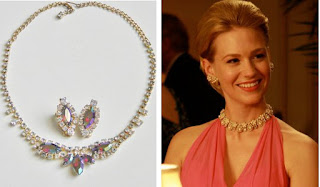
Colorful clothes from the 60's also need colorful jewelry. In the early years, traditional jewelry continued to favor embosed gold, white and colored pearls. These pretty and safe patterns complimented the 1950s-style women's clothing.
New youth with their obsession of fake plastic, vinyl, and bold colors have favored the jewelry inspired by Pop Art. Geometric shapes have made their way onto oversized pendant earrings. Large bracelets or piles of thin bracelets mingled with bare arms. The forms of novelty were still popular too but they adopted brighter colors and more comical themes.
The same is true for flowers, made from plastic resins. They were joyful pastels or primary colors hanging everthing including necklaces,piercings and bracelates
60's make-up
The look of the cemetery was inside. Pale white skin, white lips, dark black eyeliner and dark shadow of smoky eyes. It was a stark contrast to the feminine appearance of clothing until the mid-1960s, when a layer of childlessness was added. The eyes were exaggerated with extra long eyelashes, shadows of bright eyes, arched eyebrows, blush of spots of light and lips turned into a pink baby.
The perticular combination, turning back, was a scene from a horror movie of a boy-meets-ax-killer.
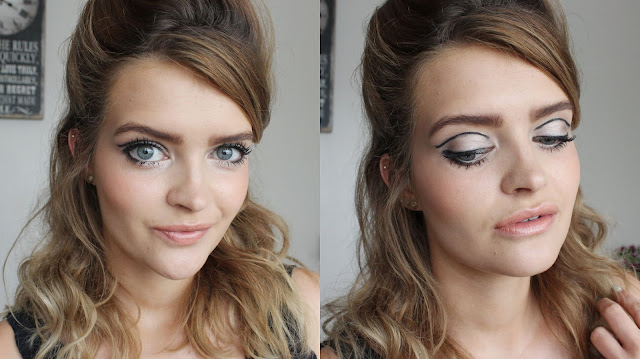
The Look of Urchin
When actress Mia Farrow was cut short by Vidal Sassoon during the filming of Romans Polanski's romantic film Rosemary's Baby in 1968, powerful shockwaves resonated between the conscious style. Sassoon received $ 5000 for the job, as well as a plug in the movie. And fortunately for him, hair and film were a success.
Although the hedgehog's gaze was not new, Mia Farrow made it look like this. The new wave ultra cool actress Jean Seberg had already taken the style with great aplomb a decade earlier and had been featured in the 1960s fashion film by Juan Luc Godard, Breathless. Across the Atlantic, shorter hair had generally been popularized in 1966 by British fashion icon Twiggy, though his was more a variation of a bob than a hedgehog cut. Mia however, brought the hedgehog's very short look into the mainstream and was soon featured on the sandy windows of suburban beauty salons around the world.
Unfortunately, the ultra short layer was only for the lucky few, as it is not a style that everyone can carry out - for many, meant too much exposure of less than harmonious features. When it works, though, it is perhaps the most eye-catching of all the styles of the 60's. It looked good on Jean and Mia anyway.
Second Wave Bob
England was the fashionable epicenter of the sixties - the Mod movement had sprung up from there and was home to the Beatles, Stones, The Who, Kinks and many other influential bands.
Not only were British bands taking the world by storm - Carnaby Street was the pulsing pulse of swinging fashions of the sixties and Vidal Sassoon went to hair what British designer Mary Quant went to to wear. In fact, it is difficult to talk about the hair of the sixties without Vidal Sassoon coming into the picture - he was the most influential hairdresser of the decade.
Sassoon reinvented the bob look of the 1920s in 1963, and brought it to new geometric levels in 1966. Together with Mary Quant, the pair helped form many of the iconic stylistic elements of the 1960s.
Sassoon's bobs were cut precisely in the hair, so when the user moved, everything fell nicely in place. They were low maintenance and did not require pins, tweezers, rollers and lotion fittings - it was the beginning of the blowing wave.
Turned around
Gravity challenging up the film was hugely popular in the early to mid sixties. The ends of the hair were curled in jumbo rollers and the top part was mocked to create a kind of hump on the crown. It was a flattering and uplifting style and the hair bounced looking up as you danced.
Older women tended to wear their shorter and bouffier flips, while the younger set was longer and looser. The style was a general winner and used by figures as diverse as Jackie Onassis and a young
Olivia Newton John. Like the hedgehog and even the bob, the pull was a universally flattering style.
Other styles of the sixties, such as the bouffant, the bubble, and the hive were becoming less popular as the decade passed; Certainly for teenagers. For one thing they were just a little too artificial, on top of which, they were very high maintenance. Although the pull required some effort, it might also be used more casually - with movement rather than stiffness.
Although hair extensions were not introduced, wigs and wiglets rose to new heights of popularity; If you had short hair or could not be bothered the style of your movie you could add a pre curled wiglet for bounce and height.
At the end of the decade, the artifice, both in the hair and in the makeup, would lose ground, as the hair began to lengthen and the styles less obviously artificial. Before the 1960s, long hair had not really been seen since the 1920s and still had not come loose.
Long and hot hair
Towards the end of the 1960s there was a move away from structured hairstyles towards a more fluid and natural look. The liberation was the clamor of the age and the call to freedom extended to the hair. He hoped the elegant ones would leave their hair free and let it grow and go wherever and
whenever they wanted. At least it should give that impression, even if it took some serious style and clever cut to make it look like this. Few celebrities personified the sexual and hairy freedom of the 60's more than the French anatomical film star Brigitte Bardot. Bardot's hair, like his person, was wild and free and always looked suspiciously ruined, as if he had been rolling around the bed five minutes earlier in a passionate embrace.
Professional brides like Marianne Faithfull, whispering and girly singer of Mick Jagger and Jane Birken, dusty and gallant of Serge Gainsbourg, provided liberating images for magazines and columns of gossip and were role models for young aspirants seeking glamor and notoriety. After a rocky hellway, Marianne Faithful would later be reborn as a gutsy gravel voice, singer / disco singer and Jane Birkin won the distinction of having a Hermès handbag bearing her name.
In 1968, musical hair opened on Broadway and long hair was officially declared a metaphor for free thinking, establishment following cultures. In a kind of culmination of the cultural trends of the sixties - sex, profanity, nudity, irreverence and drugs were presented on stage. For the conservative forces, it meant that the world was in the pot, but for others, it meant that it was being liberated.
The end of the sixties was exactly the opposite. Bright colors, swirls. Psychedelic, dyeing shirts, long hair and beards were common. The woman wore incredibly short skirts and the men wore robes and cloaks. The foray into fantasy would not have been believed by people just a decade earlier.
It is almost like the 1950s bottled up all over the world until as much as the 1960s exploded like an old pressure cooker. Women showed more skin than ever.
For the first time in the nineteenth century, London, not Paris, was the center of the fashion world. The British invasion did not stop with The Beatles. It spread to all parts of life, especially to clothing.
But in reality, lost in the two extremes is half of the 60s, which I think actually had the coolest, but more subtle style. I love the long, slender shapes, the bright colors and the young London look. I've always wanted the Mod style to stay a little longer.
Comments

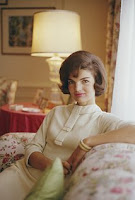
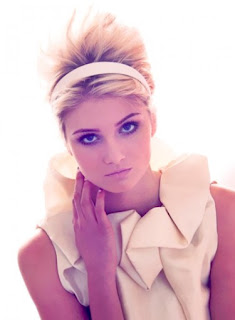

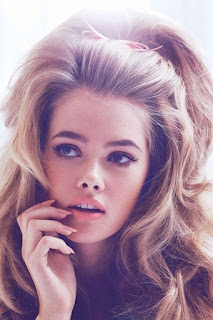
Nice Post
ReplyDeleteSnipby: Best Mens and Womens salon for Haircuts, makeup, massage and beauty services